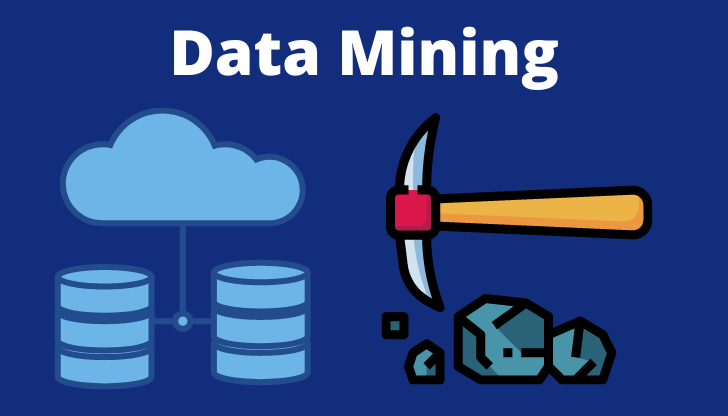Introduction
The financial world is evolving at an unprecedented pace. Powered by massive data flows, innovative analytics, and increasing computational abilities, today’s financial markets present new opportunities—and unique challenges—for traders, portfolio managers, and investment firms alike. Central to riding this new wave is the adoption of data mining frameworks and machine learning tools, which are reshaping the landscape of financial analysis and trading.
On advanced trading platforms like iXbroker, the integration of these tools is a catalyst for smarter decision-making, superior risk management, and much improved trading efficiency. In this comprehensive article, we explore the mechanisms and advantages of modern data mining frameworks in financial markets, highlighting both theoretical aspects and real-world applications tailored to professional traders, algorithmic investors, and forward-thinking platforms.
The Shift from Traditional to Data-Driven Trading
The Limitations of Classical Approaches
For decades, traditional financial analysis was based on two major domains:
- Fundamental analysis investigates the valuation of an asset by assessing cash flows, profits, assets, managerial strength, market share, and macroeconomic indicators.
- Technical analysis involves chart reading and the study of historical prices and volume to identify market patterns, such as head-and-shoulders or cup-and-handle formations.
While invaluable, these disciplines often fall short in the face of ultra-volatile and globally interconnected asset markets. Human-driven analysis can neither process the volume nor the velocity of today’s streaming market data, resulting in missed signals and inefficiencies.
The Emergence of Data Mining in Finance
Data mining is the practice of automatically searching large stores of data to discover patterns and trends that go beyond simple analysis. In finance, these techniques have moved far beyond mere descriptive analysis—they enable accurate forecasting, risk alerting, strategy optimization, and even fraud detection in real time. Most importantly, they empower companies and traders to convert raw data into real, actionable intelligence—often in seconds.
Anatomy of a State-of-the-Art Financial Data Mining Framework
A domain-specific data mining framework, such as those referenced in recent academic research, has several distinct phases, each tailored for the challenges of financial modeling:
1. Advanced Data Preprocessing
Financial data comes in countless forms: price histories, economic indicators, news headlines, social media sentiment, and more. However, this data is frequently incomplete, noisy, or inconsistent. Advanced preprocessing consists of:
- Imputing missing values using statistical models or domain knowledge
- Removing outliers and anomalies that could skew model results
- Normalization/scaling to put variables like price and volume on comparable footing
- Text mining for news or social data—removing “stop words,” stemming, and extracting sentiment or named entities
A robust preprocessing pipeline lays the groundwork for higher model accuracy and stability, giving traders on platforms like iXbroker a clear data advantage.
2. Intelligent Feature Selection
As financial datasets grow in complexity, the number of potential features can run into the hundreds or thousands. Yet, more is not always better. Feature selection—identifying which variables actually drive market outcomes—has become essential.
Types of Feature Selection
- Filter Methods: Evaluate each feature’s correlation with the target separately (e.g., using mutual information or chi-squared scores).
- Wrapper Methods: Evaluate combinations of features via model training and typically use search algorithms like Genetic Algorithms (GA), Forward Selection (FS), or Backward Elimination (BE).
- Embedded Methods: Feature importance is determined during model training, as with some tree-based and regularization techniques (LASSO, ElasticNet).
Effective feature selection produces models that are not only more accurate but also more interpretable.
3. Building Predictive Models
Various machine learning models have proven especially effective in financial forecasting and trading:
- Linear models like ARIMA and GARCH, which account for autocorrelation, seasonality, and volatility clustering in time series data
- Nonlinear models such as Artificial Neural Networks (ANN), Support Vector Machines (SVM), and Decision Trees for capturing complex relationships not visible with linear approaches
- Hybrid models: For example, combining ARIMA (trend/seasonality) with ANN or SVM (capturing nonlinear effects), or stacking models for better accuracy
Algorithmic sophistication allows platforms like iXbroker to offer clients automated systems that adapt to rapidly changing market conditions in real-time.
4. Rigorous Backtesting and Validation
No model is valuable unless it performs well out-of-sample. Backtesting is the practice of testing strategies and predictive models on historical data to estimate their performance in real trading. Key elements include:
- Walk-forward analysis: Constantly retrain and retest the model on new data
- Cross-validation: Systematically rotate between training/test datasets to minimize overfitting
- Financial metrics: Not just accuracy or MSE, but profit/loss, Sharpe ratio, drawdown, and risk-adjusted returns
Well-managed validation protects traders from “overfit” models that look great on backtests but collapse under real market pressure.
5. Interpretability and Effective Reporting
Transparency is paramount, especially for compliance and practical trust. Incorporating interpretability tools—like feature importance charts, rule extraction, and visualizations—makes model decisions accessible to both analysts and end-users. Platforms like iXbroker can leverage these features to provide clients not just with signals, but with explanations and actionable insights.
Real-World Use Cases: Data Mining for Traders and Institutions
Yield Curve Spread Forecasting
Predicting the spread between 3-year and 10-year government bonds can alert market participants to future economic shifts, monetary policy actions, and risk sentiment changes. With hierarchical data mining approaches, researchers have achieved over 84% accuracy, providing traders an early warning for rotations between equities and bonds.
Social Signals and Alternative Data
The landscape of financial modeling is now incorporating alternative data, such as:
- Google Trends search queries
- Wikipedia page view statistics
- Twitter and financial news sentiment
Harnessing these broad and real-time data sources, advanced data mining frameworks can anticipate market momentum shifts that traditional models may miss.
Hybrid and Ensemble Methods in Trading
By stacking or blending multiple algorithms (e.g., ARIMA + ANN, tree ensembles), volatility spikes, regime shifts, and nonlinear breakout patterns can be better predicted. This not only enhances the speed and robustness of algorithmic trading but also enables more sophisticated risk management.
The Impact on Platforms Like iXbroker
For professional trading platforms, integrating cutting-edge data mining frameworks yields clear benefits:
- Faster and Smarter Decision-Making:
Automated detection and reaction to trade signals in milliseconds give traders and portfolio managers a measurable performance edge.
- Improved Profitability and Risk Control:
Accurate predictive analytics help optimize trade entries, exits, and portfolio hedging, while also flagging anomalies, market manipulations, or potential fraud.
- Enhanced User Experience:
Visual analytics, custom alerts, and personalized dashboards help even less experienced users gain real-time, actionable insights, fostering retention and engagement.
- Competitive Differentiation:
AI-driven features, predictive market analytics, and alternative data integration position platforms like iXbroker far ahead of traditional brokers reliant on manual analysis.
Navigating the Challenges: Best Practices
No technology is without its hurdles. Key considerations for data-driven finance include:
- Data Privacy and Security: Especially when combining alternative and personal user data.
- Model Robustness: Markets regularly shift regimes—models must adapt, requiring periodic retraining and real-time monitoring.
- Interpretability vs. Complexity: The most complex models are not always the most trustworthy in high-stakes settings. Striking a balance is key.
- Cost Sensitivity: Execution slippage, commissions, and latency must be integrated into out-of-sample testing.
The Future: AI, Alternative Data, and the Next Generation of Trading
Looking ahead, several trends will further transform trading and investment:
Real-Time Adaptive Trading Systems
Trading algorithms will soon leverage continuous flows of data—onchain blockchain metrics, news articles, tweets, economic indicators—and automatically recalibrate on the fly. Systems will analyze the news or a viral tweet as it happens, instantly updating trade signals.
Explainable AI (XAI) in Finance
Global regulatory standards and institutional users will require “white-box” AI models. This means traders and compliance officers will demand clarity not just on predictions, but on why certain trades or portfolio changes are recommended.
Democratization through Custom AI Advisors
With user-friendly interfaces and low-code solutions, even retail investors will build, test, and deploy their own AI-driven strategies, personalized to their risk/return preferences, directly within platforms like iXbroker.
Integration of ESG and Behavioral Factors
Models will increasingly ingest environmental, social, and governance (ESG) data, as well as behavioral data, to anticipate the direction of investor sentiment and capital flows, further enhancing the depth and utility of financial predictions.
Conclusion
Financial markets are entering an age defined by data and intelligence. For every trader, investor, or platform like iXbroker, the integration of advanced data mining frameworks is no longer optional—it is essential. These systems offer actionable insights, real-time risk controls, and predictive power that traditional analysis simply can’t match. As the industry moves forward, the firms and platforms that invest in these tools today will shape the technology-driven trading ecosystem of tomorrow.




